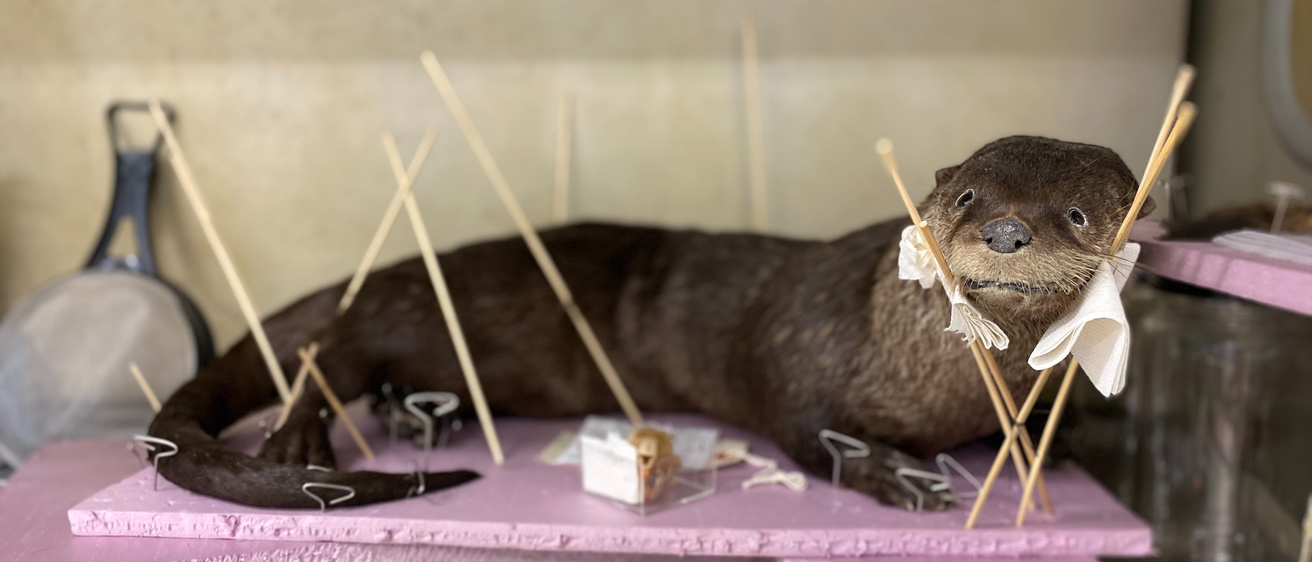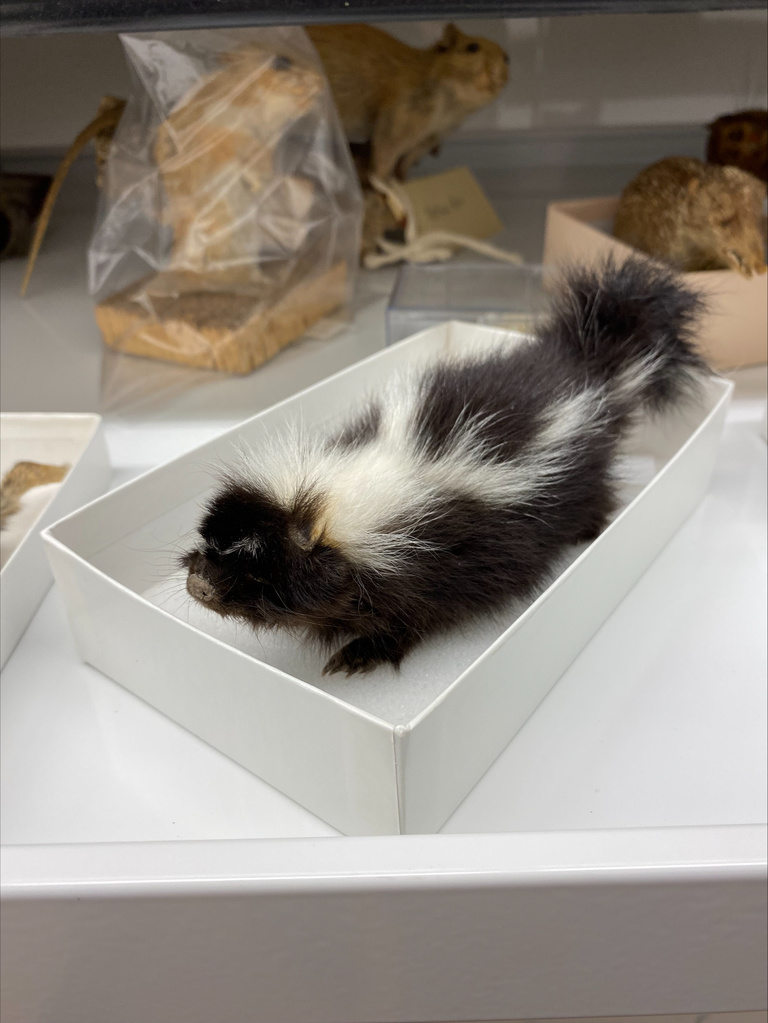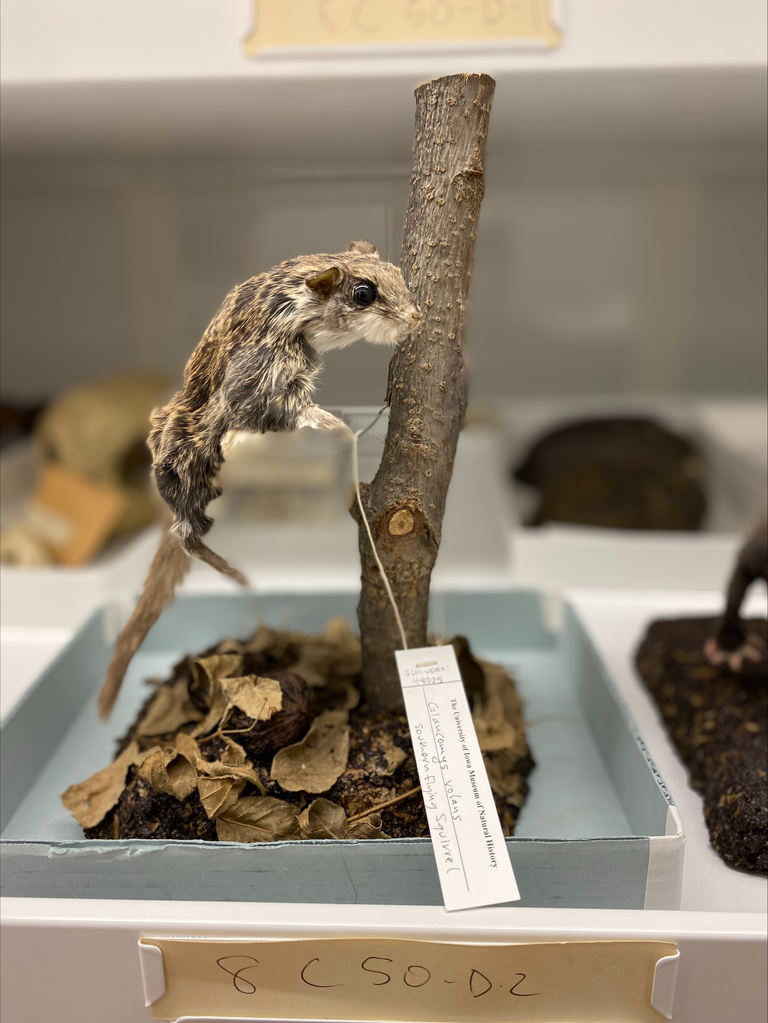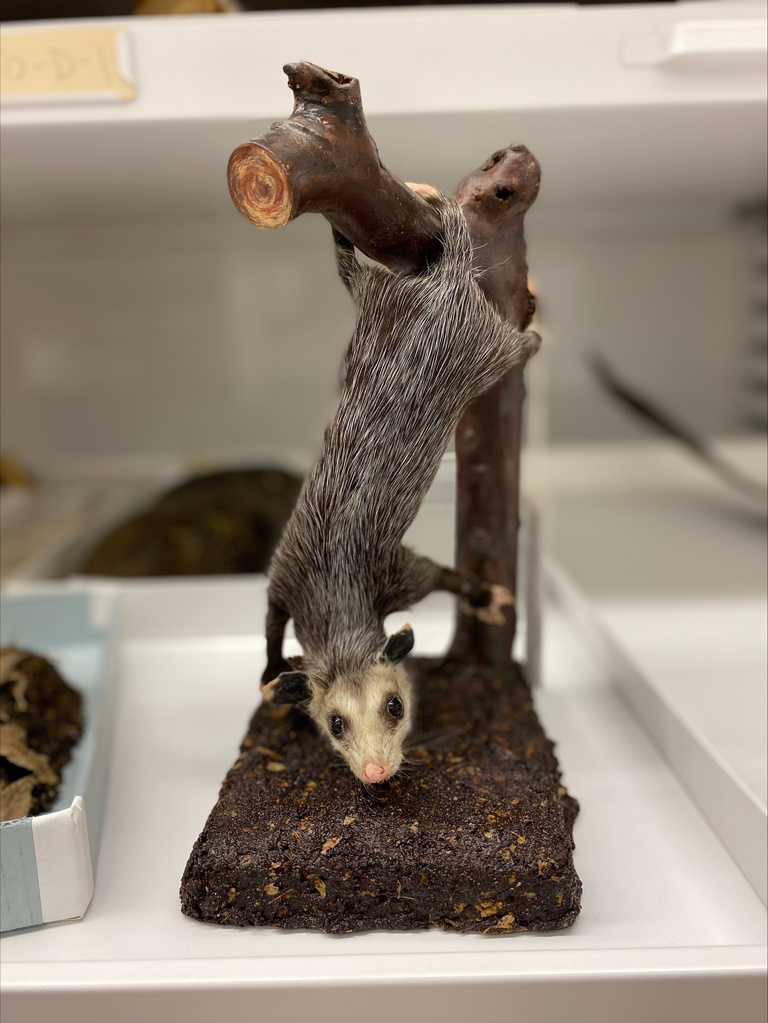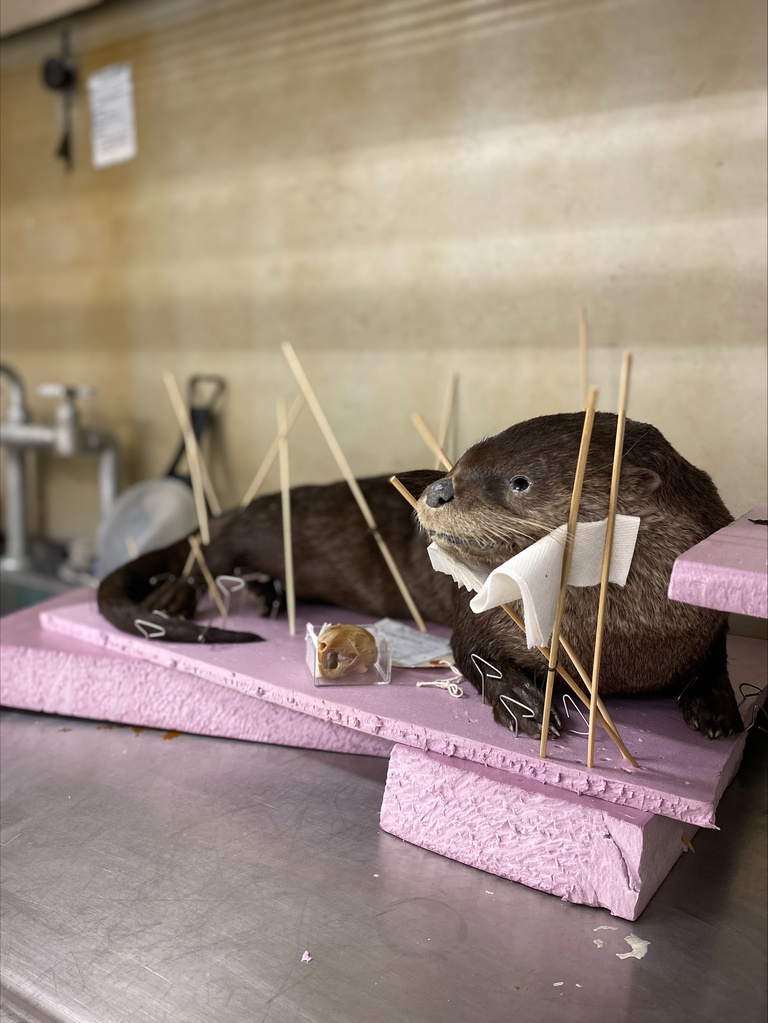Clay Elscott, an English and Creative Writing and Museum Studies student, has spent the last few years learning a unique skill here at the Museum of Natural History: taxidermy.
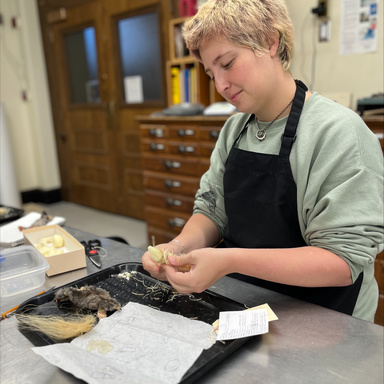
Clay fell in love with taxidermy after volunteering to prepare a bird in our Director of Research Collections Cindy Opitz's Museum Objects and Preservation class. Since then, they have joined Cindy’s student group of specimen prep volunteers and worked with a variety of animals, including a baby opossum, flying squirrel, and otter.
"One of my favorite parts about [taxidermy] is being able to see how animals' bodies work on a physical level. There's something oddly beautiful about how muscles layer together and the way that tendon intermingles with bone," said Clay. "I also appreciate how death doesn't go to waste with taxidermy, these animals will be remembered and learned from for years."
With the University of Iowa being home to the oldest Museum Studies program in the nation, Clay joins a long line of students preparing specimens for display or research in our museum lab. On a national scale, however, this tradition is declining.
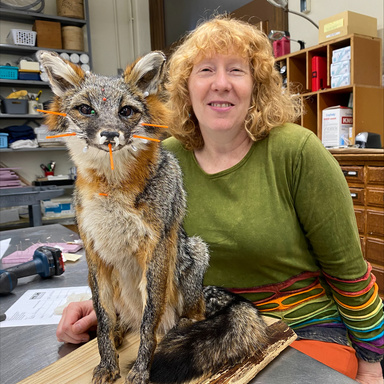
“Back in the day, museums of natural history regularly had taxidermists on staff, but there is only one left in the country, Allis Markham, who trained me,” said Opitz. “I’m excited to have brought instruction in specimen preparation and taxidermy back into the museum lab. Taxidermy is an artform that blends art and science, and students are eager to learn these skills.”
Opitz emphasizes that no animals are killed for the primary purpose of preparing taxidermy today. When thinking about collection in the late 1800’s, at the start of our museum, it is quite different from modern-day acquisitions. Regardless of their origin, these specimens hold incredibly valuable information about our past, present, and future.
“I maintain state and federal salvage permits that allow me to pick up or receive dead animals, such as birds that have struck windows or birds and mammals that have died from collisions with cars, or animals that died at rehabilitation centers,” said Opitz. Salvaged animals become part of research collections, where the physical specimens and associated digital data are available to researchers around the world.
Please visit the Museum of Natural History or make an appointment to access research collections.
